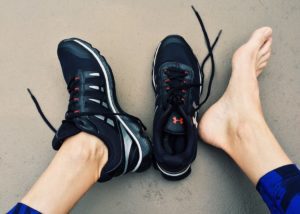Pain In Arch Of Foot
Feet are an often forgotten about part of our lives, but they’re incredibly important. You spend a huge portion of your life on your feet, so any problems there can be very difficult to work with. And foot problems are much more common than you’d think. A study performed in November of 2010 found that foot disorders affected 20-60% of all adults. That means that, at a minimum, almost 50 million people in America were affected by foot disorders in some manner in 2012, a number which will only rise over time. One of the most common foot issues that people are faced with is high arch feet. While they may not seem like a huge problem, especially because people with high arch feet live their entire lives with them, they can cause a multitude of problems over time.
High Arch Feet Problems
High arched feet, also known as cavus feet, is a disorder characterized by an abnormally high arch in the foot (as the name implies). This causes excess amounts of weight to be placed on the ball and heel of the foot, which can cause pain. Cavus foot can develop at any age, though it’s most commonly inherited at birth. WebMD reports that high arch feet are inherited by 68% of women, and 20% of men. 99% of women under 60 with the disorder inherit it from their parents, as do 63% of men. Outside of genetics, cavus foot can be caused by a myriad of neurological disorders and other medical conditions. Cerebral palsy, Charcot-Marie-Tooth disease, spina bifida, polio, muscular dystrophy, and strokes are some of the most common disorders and conditions that cause cavus foot. This make accurately diagnosing cavus foot incredibly important, as it may be an early sign of a very difficult disorder. Cases of cavus foot caused by a neurological disorder are likely to worsen over time, but cavus foot will likely remain the same when caused by a medical condition or inheritance.
 High arch feet will cause pain when walking, especially over long periods. Severe cases of cavus foot will cause discomfort and pain while standing, often centered in the heel. Cavus foot can lead to calluses on the ball, heel, and toes, as while as deformity of the toes. Hammertoes (toes that appear bent) and claw toes (toes clenched like a fist) are common symptoms of cavus foot. Ankle sprains are also sometimes caused by high arch feet, as the disorder can lead to imbalance and instability because of forward tilt. In rare cases, cavus foot leads to foot drop or weakness in the muscles of the feet that lead to dragging while walking. Foot drop is almost always a sign of a neurological condition.
High arch feet will cause pain when walking, especially over long periods. Severe cases of cavus foot will cause discomfort and pain while standing, often centered in the heel. Cavus foot can lead to calluses on the ball, heel, and toes, as while as deformity of the toes. Hammertoes (toes that appear bent) and claw toes (toes clenched like a fist) are common symptoms of cavus foot. Ankle sprains are also sometimes caused by high arch feet, as the disorder can lead to imbalance and instability because of forward tilt. In rare cases, cavus foot leads to foot drop or weakness in the muscles of the feet that lead to dragging while walking. Foot drop is almost always a sign of a neurological condition.
The clearest sign of cavus foot is a remarkably high arch. If the arch in your foot is visible while it’s planted on the ground, you may have cavus foot. Don’t worry too much, as cavus foot can be dealt with, but the earlier you seek consultation, the better. To diagnose cavus foot, a doctor will look into your family history before anything else, as it is so commonly genetic. Afterwards, the doctor will test your foot for strength, signs of weakness, toe deformity, and other symptoms. An x-ray may be ordered, to check for further damage that isn’t easily visible. Finally, the doctor will check for signs of neurological disorder. If one is found, they may examine the entire limb.
High Arch Feet Solutions
High arch feet is most often treated with the use of orthopedic devices. Orthotic devices may be placed in your shoes, which will help to spread weight over the whole foot. Shoes may also be modified, or orthopedic shoes may be recommended. These shoes support the ankle and increase surface area around the heel to help absorb weight. Finally, an orthopedic doctor may recommend bracing. This is most often used in the case of foot drop, though it may be recommended if the patient is frequently off balance. Bracing helps to add support and stability to the ankle, making walking easier and much safer.
If these orthopedic devices fail to relieve pain and increase stability, surgery will be recommended. An orthopedic surgeon will be able to perform a customized surgery specific to the case they are dealing with to best relieve symptoms. In most cases, this will be a “one and done” surgery. After the recovery period, the problem will be almost entirely gone. However, in the case of neurological disorder, the doctor may have to perform the surgery more than once to avoid the worsening of symptoms.
